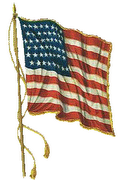Pope visits Turkey amid heavy security, anger over earlier comments on Islam
By Brian Murphy
ANKARA, Turkey — Pope Benedict XVI began his first visit to a Muslim country Tuesday with a message of dialogue and "brotherhood" between Christians and Muslims in an attempt to ease anger over his perceived criticism of Islam.
Two months after the pope touched off fury across the Islamic world with remarks linking violence and Prophet Muhammad, the Turkish prime minister — in a last-minute change of plans — was on hand at the airport in Turkey's capital to greet the pontiff.
"All feel the same responsibility in this difficult moment in history, let's work together," Benedict said during his flight from Rome to Ankara, where more than 3,000 police and sharpshooters joined a security effort that surpassed even the visit of President Bush two years ago.
The pope used his first moments of his four-day trip to try to mend fences with Islamic leaders.
"We know that the scope of this trip is dialogue and brotherhood and the commitment for understanding between cultures ... and for reconciliation," he told reporters on his plane.
Prime Minister Recep Tayyip Erdogan welcomed the pope at the foot of the plane.
"I want to express happiness to see you and your delegation in our country," Erdogan told the pope before meeting with him privately. He described the pope's visit as "very meaningful."
Erdogan, who was bound for a NATO summit in Latvia, had only announced the day before that he would make time to meet Benedict in a nation where many people view the pope with suspicion. Erdogan's political party has Islamic roots, though the government is secular.
In his first official act, Benedict visited the mausoleum of Mustafa Kemal Ataturk, the founder of modern Turkey, and wrote a message in a guest book calling Turkey "a meeting point of different religions and cultures and a bridge between Asia and Europe."
Police monitored the highway leading to Ankara from the airport, where Turkish and Vatican flags waved in a light breeze. Snipers climbed atop buildings and hilltops. In wooded areas along the route, soldiers in camouflage fatigues set up observation points and sniffer dogs passed along bridges.
Benedict's journey is extraordinarily sensitive, a closely watched pilgrimage full of symbolism that could offer hope of religious reconciliation or deepen what many say is a growing divide between the Christian and Islamic worlds.
The outcome depends partly on the words and gestures of Benedict, who triggered an outcry in September when he quoted a 14th century Christian emperor who characterized the Prophet Muhammad's teachings as "evil and inhuman."
The Vatican said the speech was an attempt to highlight the incompatibility of faith and violence, and Benedict later expressed regret for the violent Muslim backlash.
In Ankara, a small protest was held before Benedict's arrival. "You're not welcome, Pope," read a banner. On Sunday, more than 25,000 Turks showed up to an anti-Vatican protest in Istanbul, asking the pope to stay at home.
It was his first visit to a Muslim country as pontiff. The original goal of the pope's trip to Turkey was to meet Bartholomew I, leader of the world's 300 million Orthodox Christians. The two major branches of Christianity represented by Bartholomew and Benedict split in 1054 over differences in opinion on the power of the papacy, and the two spiritual heads will meet in an attempt to breach the divide and reunite the churches.
Shortly before the pope's arrival, Erdogan said he hoped the visit would promote peace, and he urged Turks to show traditional hospitality and shun provocations by "marginal" circles.
Benedict leaves Ankara on Wednesday for Ephesus, where the Virgin Mary is thought to have spent her last years, and will then travel to Istanbul.
A closely watched moment of the trip will come Thursday during Benedict's visit to Haghia Sophia, a 1,500-year-old site that was originally a Byzantine church and then turned into a mosque after the Muslim conquest of Istanbul — then known as Constantinople — in 1453. It is now a museum, and Turks would take offense at any religious gestures by the pontiff, who also plans to visit the nearby Blue Mosque.
In 1967, Pope Paul VI fell to his knees in prayer, touching off protests by Turks claiming he violated the secular nature of the domed complex. In 1979, Pope John Paul II made no overt religious signs during his visit.
On Monday, a group of 100 pro-Islamic demonstrators displayed a petition demanding that the Haghia Sophia be declared a mosque and opened to worship for Muslims.
Pertinent Links:
1) Pope visits Turkey amid heavy security, anger over earlier comments on Islam
Tuesday, November 28, 2006
Subscribe to:
Post Comments (Atom)




No comments:
Post a Comment